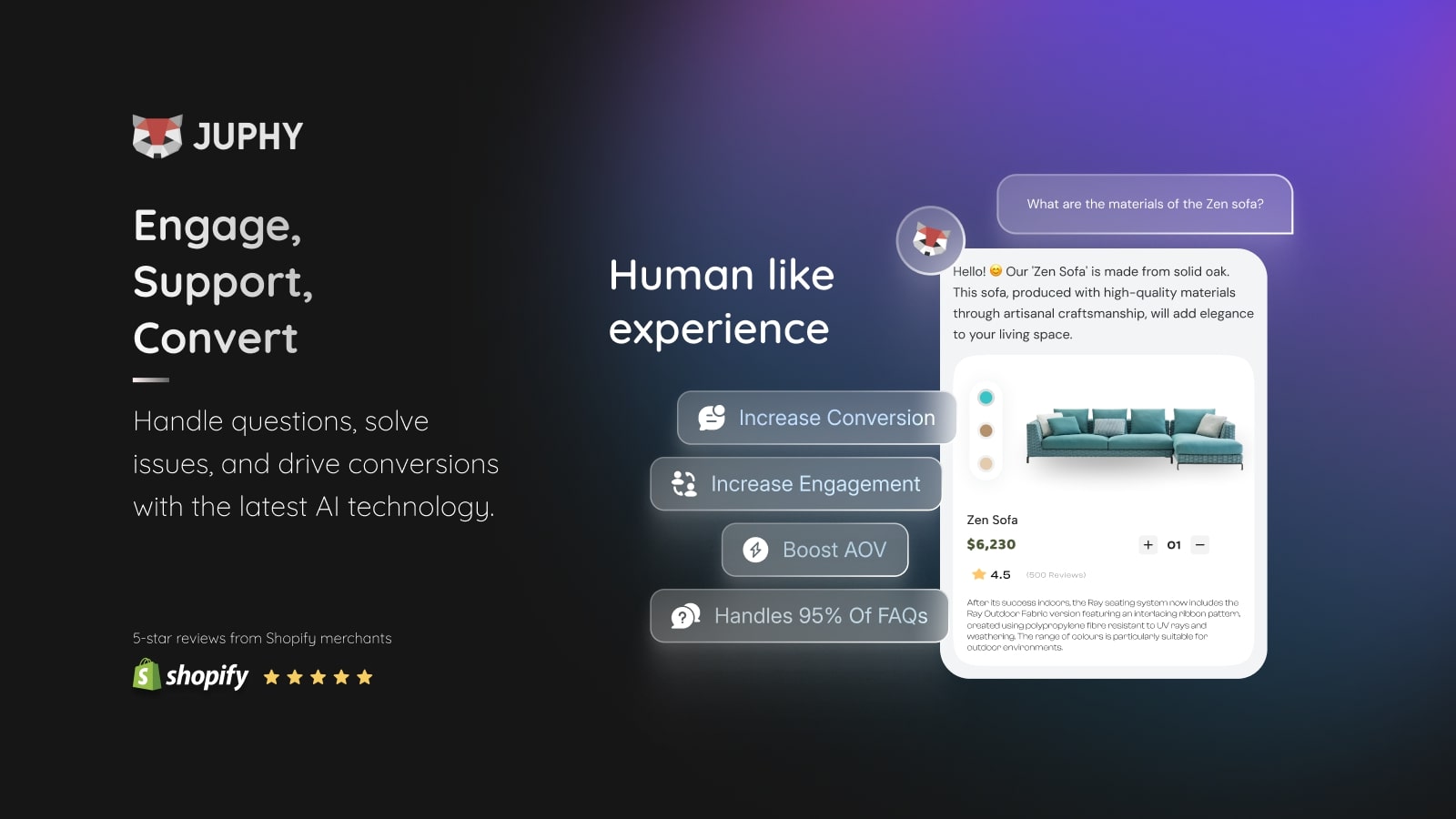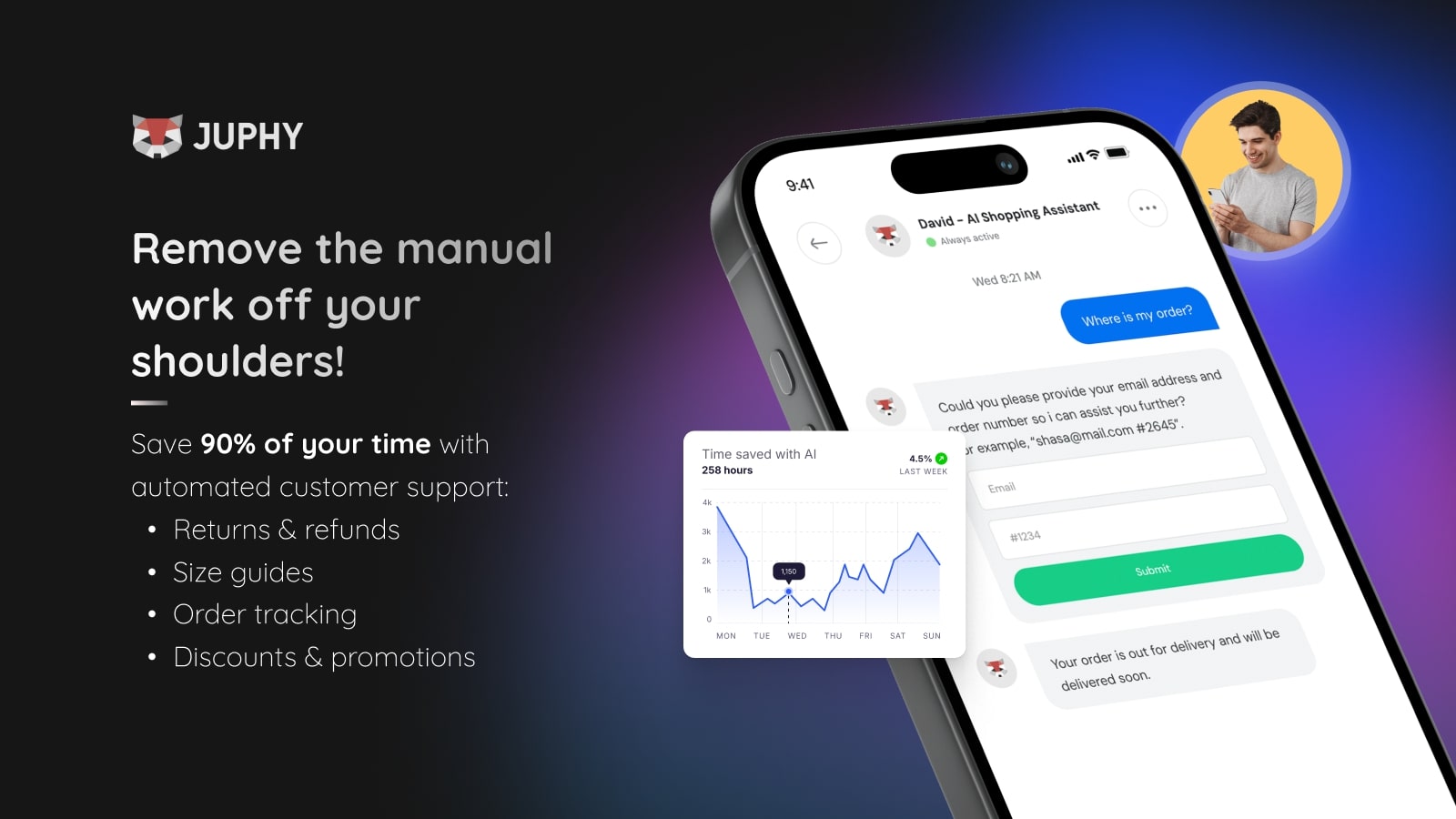The New Digital Wave: E-Commerce Trends in 2024
Glory-Anna Oshafi
Every year, new trends invade and dominate the e-commerce market, transforming how we shop online and influencing the use of new platforms for buying and selling.
Several trends played significant roles in shaping the e-commerce industry in 2023, with mobile commerce leading the charge, followed closely by social shopping.
In 2024, new trends are beginning to emerge, and old trends are evolving to align with the times. In this article, we’ll examine each of these trends and how they affect the future of online shopping.

Overview of E-Commerce Evolution in 2024

Statistics show that the e-commerce market is not slowing down or coming to a halt in 2024. Predictions project that e-commerce growth worldwide will increase by 9.8% annually, generating up to $6.9 trillion worldwide by Dec. 2024.
The top three drivers for continued e-commerce growth can be attributed to improved customer experience online, thriving social commerce platforms like TikTok, and consumers ingrained habits of online shopping from COVID-19 days.
In addition to sustained e-commerce growth, some key players will continue to make a grand appearance on this year’s e-market trends. Artificial Intelligence is here to stay, with advanced chatbots and virtual assistants making life and the overall shopping experience seamless for shoppers.
Other notable mentions include the demand for sustainable practices from brands, Augmented Reality and Social Commerce practices, and the adoption of more digital payment solutions at checkout.
As an e-commerce business in 2024, it’ll be in your best interest to review this year’s e-commerce trends and identify the most relevant ones for your business so you can incorporate them early on.
Let’s see what these trends are in detail.
Advanced Personalization and AI
AI is set to play a significant role in e-commerce personalization in 2024. Through the use of AI-powered chatbots like Juphy’s AI Agent and interactive virtual assistants like Alexa and her similar talking buddies, customers’ shopping experiences will be highly personalized and more sophisticated. Let’s see how.
AI-Driven Personalization Techniques
Generative AI will play an active role in shaping the online experience in 2024. AI will be used to learn about customers’ shopping behaviors, which will then be used to offer personalized suggestions to enhance their experiences.

Chatbots like Juphy AI offer personalized recommendations by analyzing customers’ previous shopping preferences and then predicting the types of questions the customers may ask. Eventually, the AI-powered chatbot delivers an intuitive shopping experience and makes well-tailored suggestions that align with the customer’s style, interests, and values.
Machine Learning for Predictive Shopping Experiences
In 2024, the e-commerce industry will likely use machine learning to provide more predictive shopping experiences for customers. Numerous techniques already exist to help feed Generative AI technology with valuable data that drives personalization.
For instance, we have gamification and interactive quizzes. Here’s how it works:
Customers take short quizzes that help AI understand their preferences and recommend the most aligned products according to their tastes. Customers can also earn reward points when they provide data that helps these machines deliver more individualized experiences.
Sustainable and Ethical Consumerism
With the drastic changes in global climates and other recent environmental mishaps, more consumers are starting to pay more attention to caring for the environment. In response, they’re demanding eco-friendly packaging, reductions in emissions, and transparency in product lifecycles.
Here’s how:
Eco-Friendly Practices in E-Commerce
Over the past 5 years, online searches for sustainable goods grew to about 71%, according to reports by The Economist Intelligence Unit, making it one of the most notorious e-commerce trends.
78% of customers expect the brands they shop from to prioritize eco-friendly packaging and reduce packaging waste because sustainability is essential. They want you to embrace more sustainable practices and be open about sharing your eco-friendly production processes.

Reports also show that over 60% of consumers will not mind paying more for sustainably-packaged products. By aligning your business with these values, you stand the chance of improving your revenue and gaining a competitive advantage over businesses with unsustainable practices.
Brands’ Transparency and Ethical Production
In a consumer report by Mintel, 60% of consumers think that most companies simply pretend to be sustainable. This means customers can likely sniff out unethical or shady “sustainability practices” if you engage in them.
They don’t want you to say you’re a sustainable brand pretentiously. They want to see your workings, and transparently, too, in 2024. To gain the upper hand over competitors, you’ll need to “demonstrate meaningful and measurable progress towards sustainability targets.”
Your practices must be ethical, clear, and definitive. You must also be genuinely committed to the cause.
Integrating Omnichannel Strategies
Now that COVID-19 movement bans have been lifted and people are free to commute freely, the need for omnichannel sync has become all the more important. Now, customers are looking to have a seamless and unified shopping experience both online and offline. There is no room for lapses across all business fronts.
Unified Customer Experience Across Platforms
The more shopping channels you offer, the higher your customer engagement rates increase — by up to 251%, surveys say. To ensure you deliver a unified brand experience as an e-commerce business, you should first provide multiple shopping channels to cater to your customers wherever they are.

Second, you must actively maintain your presence across all shopping channels and platforms so that your customers don’t experience any disruptions when shopping.
From your physical store to your website, social platforms, or even 3rd-Party shops, deliver a synced experience to customers so they can easily pick up their shopping journey wherever they dropped off.
Leveraging Social Media for Omnichannel Success
Social commerce has gained increasing momentum since its high popularity. With the key consumer drivers being Gen Zs and Millenials, the trend of shopping on social networking sites, a.k.a social media, is not waning.
It’s, therefore, important that e-commerce businesses leverage social media if they hope to be successful in their omnichannel marketing strategy. You risk losing a huge demographic of potential customers if you don’t adopt social selling techniques.
Exploring Augmented Reality (AR)
Consumers have enjoyed the thrill of shopping from home using augmented reality, and now they want more of it. Allowing customers to shop from home while getting in-store experiences like virtual try-ons, product visualization, and interactive exploration is a trend your business should prepare for in 2024.
AR for Product Visualization
Since more people have adopted online shopping, it has proved challenging to fully imagine how products they bought online would look on their bodies or in their spaces.

Thankfully, augmented reality technology has brought a much-needed solution, changing how shoppers experience and interact with products before buying. Customers can virtually try on a pair of glasses, clothes, or even makeup before they click “buy now.” They can also use AR to decorate their home virtually with furniture and appliances before buying.
Augmented reality influences buyers’ shopping decisions, leading to a 94% higher conversion rate. It also helps to ease their pre-purchase fears, making them more confident about shopping online. In 2024, expect to see many more e-commerce businesses in more industries adopt AR for product visualization.
Enhancing Customer Engagement with AR
A report by Harvard Business Review shares how customers who used AR to sample products spent 20.7% more time on the app and viewed 1.28 more products than normal. The likelihood of buying a product also increased by 19.8% compared to customers who didn’t use AR sampling.
With AR tech, you improve customer engagement by allowing them to view products from different angles, zoom in and out, and rotate products as they wish. This helps create familiarity with the product, forming a deeper connection and reducing their fear of buying a disappointing product.

Evolving Payment Solutions
Over 69% of consumers will abandon their online carts if they experience a delay at checkout. Slow checkout points are friction points that cost businesses sales. Thankfully, providing a wide variety of payment options, such as crypto and contactless payments, helps to boost conversion rates.
See what consumers expect from you:
Cryptocurrency and Digital Wallets
It’s no longer a matter of whether you can go cashless when shopping online. The question now is, which cashless payment options are available?
In addition to traditional credit and debit card payment solutions, customers now want faster and potentially cheaper payment options like crypto and digital wallets. Providing crypto solutions in 2024 opens you up to customers who prefer to pay with decentralized digital currencies when making online purchases.

It also offers more robust security features that mitigate the risk of fraudulent transactions. Integrating digital wallets like Apple Pay and Google Pay, which require consumers to input minimal personal information, also makes for a convenient checkout experience.
Seamless Checkout Experiences
Unlike the early days of e-shopping, when most transactions were made on computers, the typical 2024 shopper closes deals on their mobile devices. This means providing a frictionless mobile checkout option is now a necessity.
A few ways to achieve this include incorporating auto-filled or pre-populated data for specific checkout information, allowing one-click purchase options, unifying cart checkout across desktop and mobile apps, and so much more.
Capturing Micro-Moments in Shopping
Micro-moments are short periods across the day when your ideal buyer picks up their mobile device to fulfill a specific need or desire. They’re fleeting moments but can significantly influence purchase decisions, and your business must be visible to consumers at those moments.
Understanding and Leveraging Micro-Moments
In those brief moments (micro-moments) when your customers decide to make a purchase online, you must ensure that you’re poised to take advantage of the opportunity and deliver a frictionless experience for them.
Google breaks down the concept into four main categories, as seen below:

For one, with smartphone shopping leading today’s e-commerce market, shoppers are constantly connected to the internet and are constantly making decisions on the go.
Secondly, micro-moments are intent-driven, and as such, you must preempt consumer intentions and be ready to stand out in the competition to gain the upper hand.
Say a consumer is shopping for “House plants near me,” the customer’s intent is clear — to buy houseplants. Optimizing your online presence using SEO to rank readily on searches like these will make all the difference in meeting consumers’ needs during their micro-moments.
Strategies for Engaging Customers Instantly
If you want to maximize micro-moments to immediately interact with customers, any or a combination of these approaches can give you the desired results:
- Go Mobile First: Optimize your checkout processes to be mobile-friendly and improve your website to ensure faster loading times. If your website is slow to load when a customer is trying to engage your service, the micro-ment may fleet past, and you may lose them. Provide easily navigable interfaces with search functionalities and clear product descriptions.
- Maximize Location-Based Services: Target customers with offers based on their location to boost conversions. Promote in-store products on your website if available, and allow for pick-up options if they live within the area.
- Create Bite-Sized Content: Capture attention with easily consumable high-quality videos, images, and infographics that promote your products. Leverage social media to showcase this content in a way that grabs attention and stops the scroll.
- Optimize for Voice Searches: With the increase in voice assistants today, more consumers are expected to use voice search to find products online. Be ready for it. Use natural language keywords to improve your discoverability in the voice search results.
- Provide Live Customer Support: Set up a live-support agent or 24/7 AI-powered sales assistant to cater to consumers who may have questions during their micro-moments. It may be just what you need to get the customer across the purchase line when they’re making buying decisions and need help deciding.
Juphy AI’s Role in Adapting to 2024 Trends
Juphy AI is a high-powered AI chatbot that changes the conversion game for e-commerce businesses. With seamless one-click integration into your e-commerce platform and loads of must-have features that help to engage your website visitors from entry to checkout, it’s a must-have for every e-commerce brand. With its ‘Built for Shopify’ badge, Juphy’s AI Agent can be directly accessed from the Shopify dashboard.
Here’s how Juphy AI is adapting to the 2024 e-commerce trends.
Enhancing E-Commerce with Juphy AI
Juphy’s AI Agent is the 24/7 online shopping assistant that helps you provide tailored customer experiences on your website, ultimately boosting revenue and conversions by up to 5x.
The tool seamlessly integrates with your Shopify web store and gets to work learning all there is to know about your product catalog and customers’ FAQs.
Without any human interference, Juphy can automatically attend to customers’ inquiries and track orders from checkout to delivery while you sleep. The result? Up to 10x more sales and a 200% return on interest (ROI.)
That’s not all. From one centralized hub, you can monitor all your customer tickets, sort your contacts, and analyze reports, helping you make informed decisions for your e-commerce business.
Enough talking; check out how these work below.
Juphy AI in Personalization, Automation, and Customer Support
Juphy AI shines as a personalization, automation, and customer support tool. It’s the go-to for all your e-commerce assistance needs.
Personalization

Have your customers been dropping off because they couldn’t seem to decide which product to choose?
Let Juphy’s AI Agent come through for you. With its updated knowledge of your catalog and learned data from customers’ shopping preferences and behaviors, Juphy makes spot-on product recommendations tailored to their interests. It can even answer their questions in detail and hold seamless conversations!
This makes it tough for customers to say no to a purchase, not when the recommendations suit them perfectly.
Automation and Customer Support

Tired of all the manually draining tasks? Is your team burnt out from repeatedly answering the same questions from customers? Juphy AI chatbot can handle questions about returns, product availability, order status, etc. The chatbot tackles complex customer support questions, providing real-time support and solutions to customers, increasing overall customer satisfaction.
Again, by leveraging Juphy’s automation features, you can categorize customers based on their product inquiry, interaction with social channels, and other types of engagement.
This leads to faster response times and more personalized interactions that boost customer loyalty.
Conclusion
The e-commerce scene is constantly evolving.
Going by predictions and projections, 2024 is likely to see a new set of exciting developments and an evolution of some existing trends. To position your business for the most success in 2024, identify relevant e-commerce trends based on your industry, adapt to or adopt them as needed, and modify your strategies for the best results.
Seeing as AI dominates a fair share of the evolving trends, adopting AI practices in your e-commerce business can be a wise decision. If you’re looking to prioritize personalization, automation, and improved customer support practices this year, then look no further than Juphy’s AI Agent as your trusted sidekick.
Start this free trial to see all the good stuff your business has been missing out on.
Key Takeaways
In 2024,
- Advanced AI-powered chatbots like Juphy AI and virtual assistants will help businesses tailor customers’ shopping experiences to their preferences, smoothening the shopping journey.
- Businesses that genuinely prioritize sustainability will gain a competitive advantage over others.
- Optimize your website by making checkout seamless, especially on mobile devices. Auto-fill personal details to reduce checkout friction and offer digital payment solutions like crypto and digital wallets.
- Take advantage of social commerce, where it matters, and leverage social media platforms to promote your products.
- Visibly position yourself during consumer micro-moments and be there for them when they make fleeting buying decisions.
- Use an e-commerce-focused tool like Juphy AI to keep up with the evolving e-commerce trends of 2024 and boost your sales and revenue by up to 10x.

